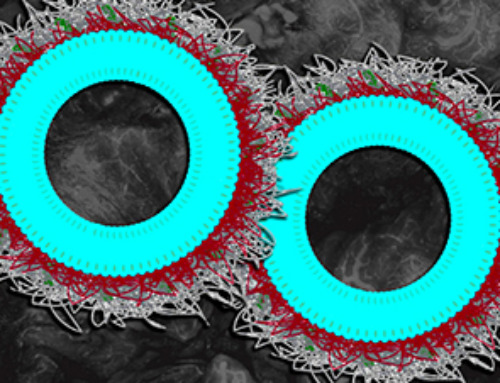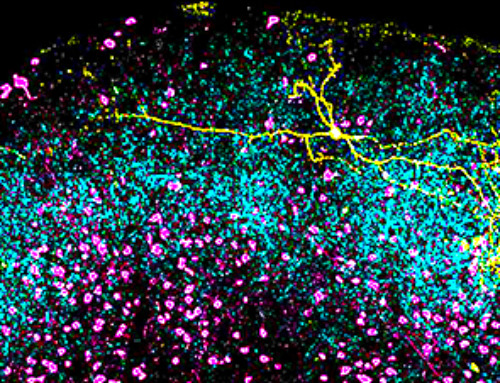A new Covid-19 vaccine soon to be approved in Australia appears to be even better than all others on offer, with new data showing it could prevent all deaths from the virus.
Trial data from the UK shows the Novavax jab stops 96 per cent of infections and 100 per cent of serious illness and death from the original version of coronavirus.
Australia has ordered 51 million doses of the jab, but it has not yet been approved by regulators.
The vaccine was also about 86 per cent effective in stopping the more contagious UK strain of Covid-19, which has caused havoc in several Australian hotel quarantine systems.
It was about 90 per cent effective overall, combining data from people infected with both versions of the coronavirus.
In a smaller trial conducted in South Africa – where volunteers were primarily exposed to another newer, more contagious variant widely circulating there and spreading around the world – the Novavax vaccine was only around 55 per cent effective at stopping infection but still fully prevented severe illness and death.
Results from the final analysis of the UK trial were largely in line with interim data released in January.
Australia is currently rolling out the Pfizer and AstraZeneca jabs, which are both very effective at stopping serious illness.
People who have received a vaccine can be given another type of jab later if it proves to be a more effective combination.
It comes after Health Department boss Brendan Murphy confirmed all Australians will not get both jabs by October.
But Professor Murphy said a solitary shot of AstraZeneca’s Covid-19 jab – rather than two – will be enough to ‘completely vaccinate’ the population by then.
Speaking on Thursday, Professor Murphy admitted the target of four million vaccinations by next month also won’t be achieved.
He said ‘global supply issues’ with a number of European countries – including Italy blocking the export of a shipment of 250,000 doses to Australia – was the reason for the delay.
Australia had been expecting 3.8 million doses of AstraZeneca vaccine from Europe in March, but so far only 700,000 doses have arrived – leaving a 3.1 million shortfall.
The vaccine was also about 86 per cent effective in stopping the more contagious UK strain of Covid-19, which has caused havoc in several Australian hotel quarantine systems.
It was about 90 per cent effective overall, combining data from people infected with both versions of the coronavirus.
In a smaller trial conducted in South Africa – where volunteers were primarily exposed to another newer, more contagious variant widely circulating there and spreading around the world – the Novavax vaccine was only around 55 per cent effective at stopping infection but still fully prevented severe illness and death.
Results from the final analysis of the UK trial were largely in line with interim data released in January.
Australia is currently rolling out the Pfizer and AstraZeneca jabs, which are both very effective at stopping serious illness.
People who have received a vaccine can be given another type of jab later if it proves to be a more effective combination.
It comes after Health Department boss Brendan Murphy confirmed all Australians will not get both jabs by October.
But Professor Murphy said a solitary shot of AstraZeneca’s Covid-19 jab – rather than two – will be enough to ‘completely vaccinate’ the population by then.
Speaking on Thursday, Professor Murphy admitted the target of four million vaccinations by next month also won’t be achieved.
He said ‘global supply issues’ with a number of European countries – including Italy blocking the export of a shipment of 250,000 doses to Australia – was the reason for the delay.
Australia had been expecting 3.8 million doses of AstraZeneca vaccine from Europe in March, but so far only 700,000 doses have arrived – leaving a 3.1 million shortfall.
Image Credit: Novavax
Post by Amanda Scott, NA CEO. Follow her on twitter @tantriclens
Thanks to Heinz V. Hoenen. Follow him on twitter: @HeinzVHoenen
News
How a Palm-Sized Laser Could Change Medicine and Manufacturing
Researchers have developed an innovative and versatile system designed for a new generation of short-pulse lasers. Lasers that produce extremely short bursts of light are known for their remarkable precision, making them indispensable tools [...]
New nanoparticles stimulate the immune system to attack ovarian tumors
Cancer immunotherapy, which uses drugs that stimulate the body’s immune cells to attack tumors, is a promising approach to treating many types of cancer. However, it doesn’t work well for some tumors, including ovarian [...]
New Drug Kills Cancer 20,000x More Effectively With No Detectable Side Effects
By restructuring a common chemotherapy drug, scientists increased its potency by 20,000 times. In a significant step forward for cancer therapy, researchers at Northwestern University have redesigned the molecular structure of a well-known chemotherapy drug, greatly [...]
Lipid nanoparticles discovered that can deliver mRNA directly into heart muscle cells
Cardiovascular disease continues to be the leading cause of death worldwide. But advances in heart-failure therapeutics have stalled, largely due to the difficulty of delivering treatments at the cellular level. Now, a UC Berkeley-led [...]
The basic mechanisms of visual attention emerged over 500 million years ago, study suggests
The brain does not need its sophisticated cortex to interpret the visual world. A new study published in PLOS Biology demonstrates that a much older structure, the superior colliculus, contains the necessary circuitry to perform the [...]
AI Is Overheating. This New Technology Could Be the Fix
Engineers have developed a passive evaporative cooling membrane that dramatically improves heat removal for electronics and data centers Engineers at the University of California San Diego have created an innovative cooling system designed to greatly enhance [...]
New nanomedicine wipes out leukemia in animal study
In a promising advance for cancer treatment, Northwestern University scientists have re-engineered the molecular structure of a common chemotherapy drug, making it dramatically more soluble and effective and less toxic. In the new study, [...]
Mystery Solved: Scientists Find Cause for Unexplained, Deadly Diseases
A study reveals that a protein called RPA is essential for maintaining chromosome stability by stimulating telomerase. New findings from the University of Wisconsin-Madison suggest that problems with a key protein that helps preserve chromosome stability [...]
Nanotech Blocks Infection and Speed Up Chronic Wound Recovery
A new nanotech-based formulation using quercetin and omega-3 fatty acids shows promise in halting bacterial biofilms and boosting skin cell repair. Scientists have developed a nanotechnology-based treatment to fight bacterial biofilms in wound infections. The [...]
Researchers propose five key questions for effective adoption of AI in clinical practice
While Artificial Intelligence (AI) can be a powerful tool that physicians can use to help diagnose their patients and has great potential to improve accuracy, efficiency and patient safety, it has its drawbacks. It [...]
Advancements and clinical translation of intelligent nanodrugs for breast cancer treatment
A comprehensive review in "Biofunct. Mater." meticulously details the most recent advancements and clinical translation of intelligent nanodrugs for breast cancer treatment. This paper presents an exhaustive overview of subtype-specific nanostrategies, the clinical benefits [...]
It’s Not “All in Your Head”: Scientists Develop Revolutionary Blood Test for Chronic Fatigue Syndrome
A 96% accurate blood test for ME/CFS could transform diagnosis and pave the way for future long COVID detection. Researchers from the University of East Anglia and Oxford Biodynamics have created a highly accurate [...]
How Far Can the Body Go? Scientists Find the Ultimate Limit of Human Endurance
Even the most elite endurance athletes can’t outrun biology. A new study finds that humans hit a metabolic ceiling at about 2.5 times their resting energy burn. When ultra-runners take on races that last [...]
World’s Rivers “Overdosing” on Human Antibiotics, Study Finds
Researchers estimate that approximately 8,500 tons of antibiotics enter river systems each year after passing through the human body and wastewater treatment processes. Rivers spanning millions of kilometers across the globe are contaminated with [...]
Yale Scientists Solve a Century-Old Brain Wave Mystery
Yale scientists traced gamma brain waves to thalamus-cortex interactions. The discovery could reveal how brain rhythms shape perception and disease. For more than a century, scientists have observed rhythmic waves of synchronized neuronal activity [...]
Can introducing peanuts early prevent allergies? Real-world data confirms it helps
New evidence from a large U.S. primary care network shows that early peanut introduction, endorsed in 2015 and 2017 guidelines, was followed by a marked decline in clinician-diagnosed peanut and overall food allergies among [...]





















